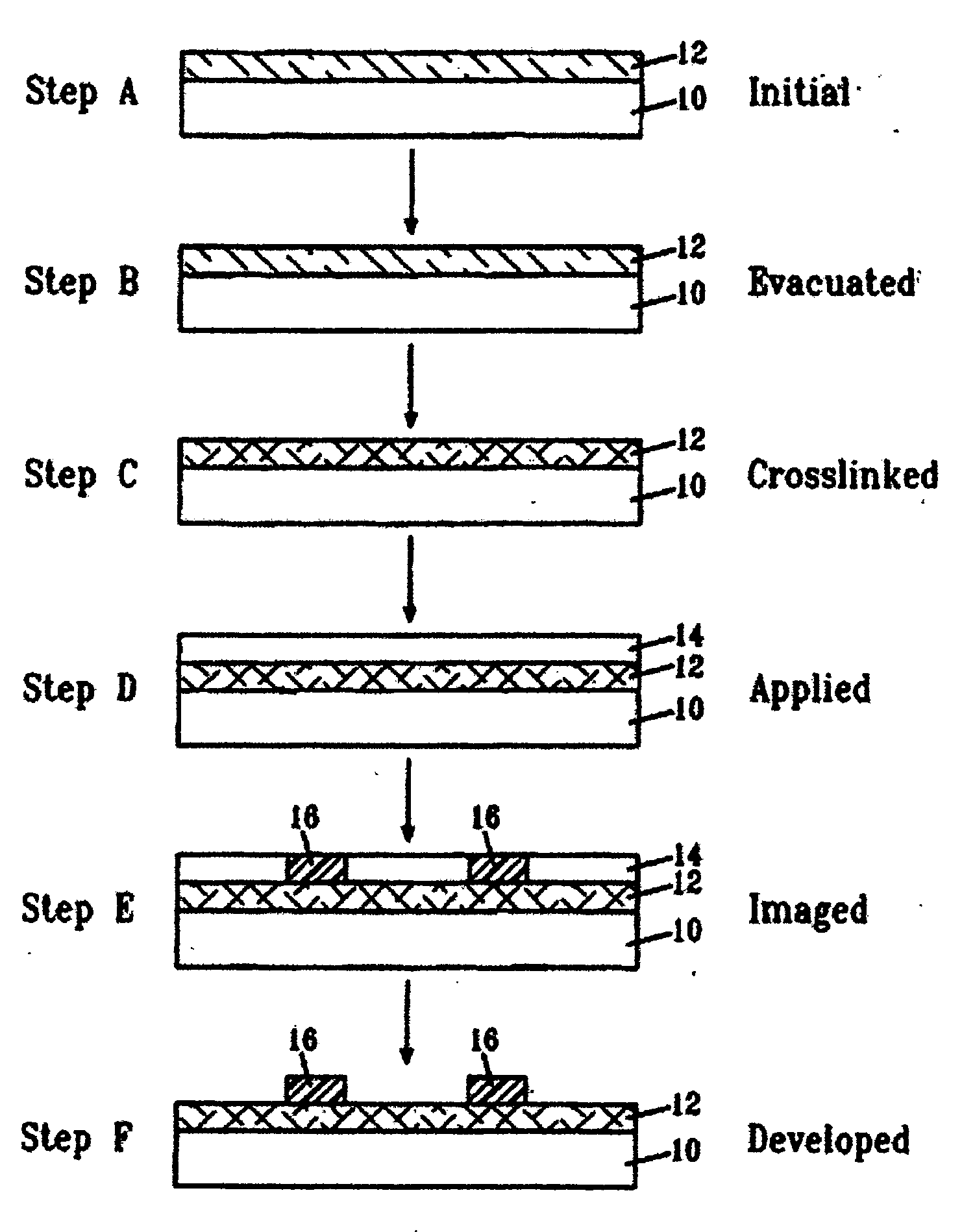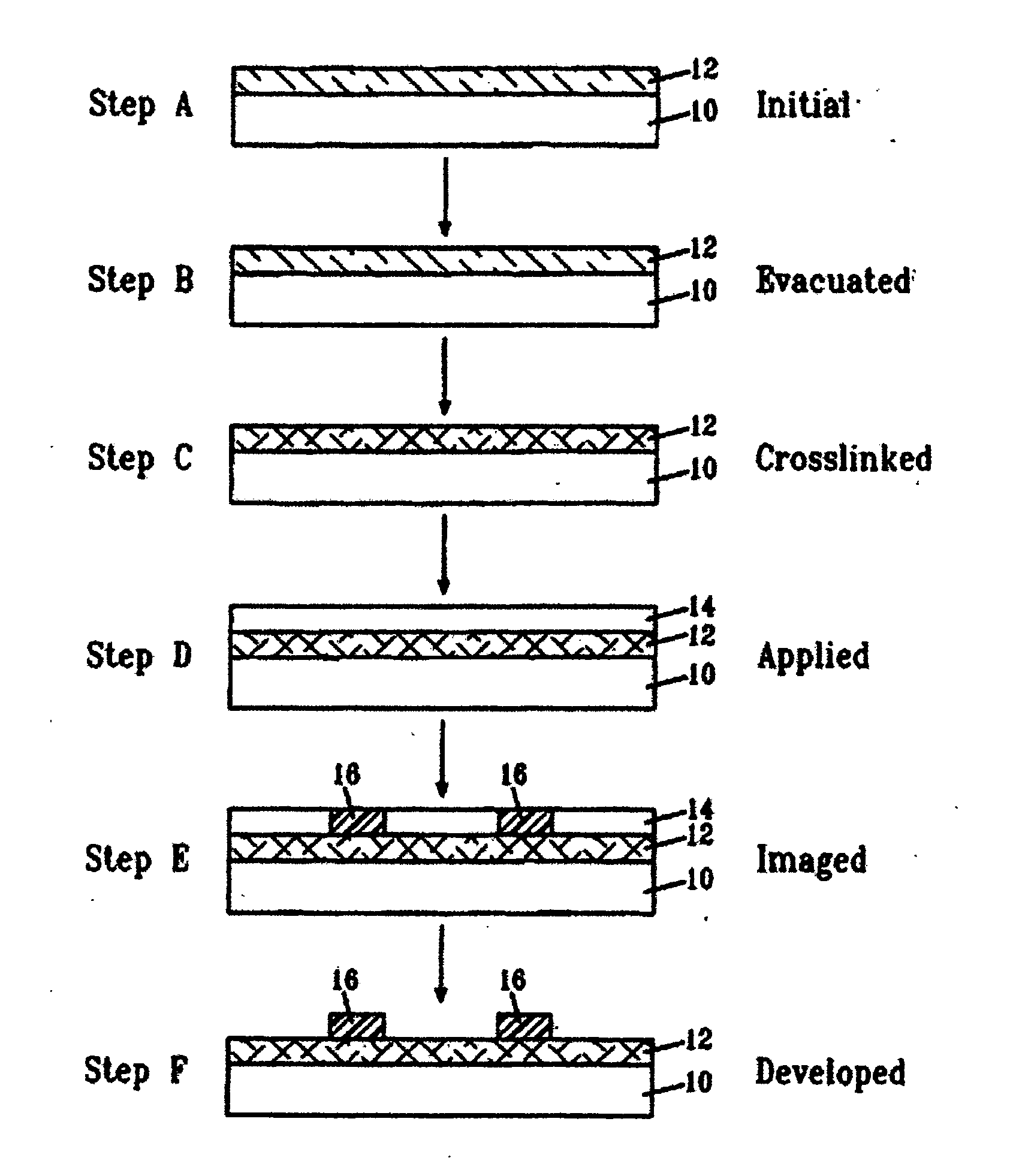Methods of preventing defects in antireflective coatings
a technology of anti-reflective coating and coating layer, applied in the field of new, can solve the problems of non-uniform photoresist linewidth upon development, non-uniform photoresist linewidth, and difficulty in achieving the effect of accelerating the development of pinhole defects
- Summary
- Abstract
- Description
- Claims
- Application Information
AI Technical Summary
Benefits of technology
Problems solved by technology
Method used
Image
Examples
example 1
[0106]Two bare silicon wafers with a thin native oxide coating were coated with an ARC on a lithography track. The wafers were then subjected to a mild vacuum-strong vacuum to remove residual solvent. By “mild vacuum”, it is meant 10−5 Torr. By “strong vacuum”, it is meant 10−7 Torr. The wafers were then returned to the lithography track and baked at conventional bake temperature.
[0107]The total number of pinhole defects in each of the two wafers were 9 and 5 in the mild vacuum and 5 and 5 in the strong vacuum (See Table 1). These results show that there was a significant reduction in the total number of defect counts on the wafers that had intermediate and strong vacuum based solvent strip compared to the wafers without a vacuum based solvent strip.
[0108]Following this vacuum exposure step, the substrate was placed on a hotplate to activate the crosslinking agent. Commercially available AR40 BARC, was baked at a conventional 215° C. bake temperature for 60 seconds. Results are show...
PUM
| Property | Measurement | Unit |
|---|---|---|
| temperature | aaaaa | aaaaa |
| temperature | aaaaa | aaaaa |
| temperature | aaaaa | aaaaa |
Abstract
Description
Claims
Application Information
 Login to View More
Login to View More - R&D
- Intellectual Property
- Life Sciences
- Materials
- Tech Scout
- Unparalleled Data Quality
- Higher Quality Content
- 60% Fewer Hallucinations
Browse by: Latest US Patents, China's latest patents, Technical Efficacy Thesaurus, Application Domain, Technology Topic, Popular Technical Reports.
© 2025 PatSnap. All rights reserved.Legal|Privacy policy|Modern Slavery Act Transparency Statement|Sitemap|About US| Contact US: help@patsnap.com


